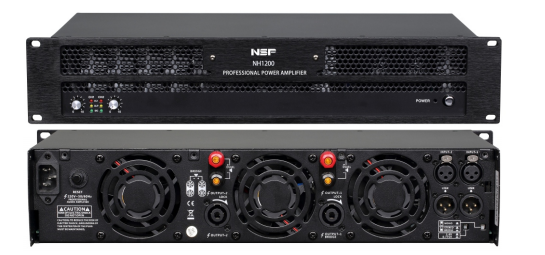Advancements in Class D Amplifier Technology
Class D amplifiers have revolutionized the world of audio amplification with their compact size, high efficiency, and incredible performance. As the demand for energy-efficient audio solutions grows, innovations in Class D amplifier technology continue to lead the way. From consumer electronics to professional audio equipment, these amplifiers have become indispensable. In this article, we explore how advancements in Class D amplifiers are shaping the future of audio technology.

The Basics of Class D Amplifier Technology
What Is a Class D Amplifier?
A Class D amplifier, also known as a digital amplifier, operates by switching the output devices on and off rapidly, using pulse-width modulation (PWM) or similar techniques to replicate an analog audio signal. Unlike traditional Class A or Class AB amplifiers, Class D amplifiers focus on minimizing energy loss, making them more efficient and compact.
Key Advantages of Class D Amplifiers
- Energy Efficiency: With efficiency rates often exceeding 90%, Class D amplifiers consume less power, generating less heat compared to their Class A or AB counterparts.
- Compact Design: Their small size makes them ideal for modern, space-conscious applications, from portable speakers to automotive sound systems.
- Cost-Effectiveness: Advances in semiconductor technology have made Class D amplifiers more affordable and widely available.
Major Advancements in Class D Amplifier Technology
Improved Switching Techniques
Modern Class D amplifiers utilize advanced switching methods to reduce distortion and improve signal accuracy. Innovations such as zero-voltage switching (ZVS) and zero-current switching (ZCS) have significantly enhanced audio fidelity while maintaining efficiency.
Enhanced Modulation Methods
Traditional PWM techniques have been refined with sigma-delta modulation and other advanced methods. These improvements reduce noise and extend the dynamic range, making Class D amplifiers suitable for high-fidelity audio systems.
Integration of Digital Signal Processing (DSP)
Many Class D amplifiers now feature integrated DSP, allowing for real-time audio adjustments and optimization. This integration enables precise control over frequency response, speaker matching, and room acoustics.
Use of GaN Transistors
Gallium Nitride (GaN) transistors are a game-changer in Class D amplifier technology. Compared to traditional silicon transistors, GaN transistors offer faster switching speeds, lower losses, and higher thermal conductivity, resulting in better performance and reliability.
Applications of Class D Amplifiers
Consumer Electronics
Class D amplifiers are widely used in devices such as smartphones, wireless speakers, and home audio systems. Their small footprint and high efficiency make them ideal for portable and battery-operated devices.
Professional Audio Equipment
In concert venues, theaters, and recording studios, Class D amplifiers deliver powerful and precise sound while keeping energy costs low. Their ability to handle high power output without excessive heat generation is crucial for these demanding applications.
Automotive Sound Systems
The automotive industry relies heavily on Class D amplifiers for in-car audio systems. These amplifiers provide high-quality sound while minimizing the impact on the vehicle’s electrical system.
Overcoming Challenges in Class D Amplifier Design
Reducing Electromagnetic Interference (EMI)
Electromagnetic interference is a common challenge in Class D amplifiers due to their high-speed switching. Engineers have developed innovative shielding techniques and advanced filtering methods to mitigate EMI while maintaining performance.
Enhancing Heat Dissipation
Although Class D amplifiers are highly efficient, heat management is still critical in high-power applications. Improved thermal management designs, such as heat sinks and advanced packaging materials, ensure reliability and longevity.
Expanding Frequency Response
To meet the demands of audiophiles, manufacturers have focused on extending the frequency response of Class D amplifiers. This development allows them to reproduce even the most intricate audio details with accuracy.
The Future of Class D Amplifier Technology
Integration with AI and IoT
The integration of artificial intelligence (AI) and Internet of Things (IoT) technologies is opening new possibilities for Class D amplifiers. Smart amplifiers can automatically adjust settings based on user preferences, environmental conditions, and device compatibility.
Wireless Audio Solutions
As wireless audio technology becomes mainstream, Class D amplifiers are being designed to seamlessly integrate with Bluetooth, Wi-Fi, and other wireless protocols. These advancements ensure high-quality sound without the clutter of wires.
Sustainability in Audio Design
Class D amplifiers align with the growing emphasis on sustainability. Their energy efficiency and minimal material usage make them an environmentally friendly choice for modern audio systems.
Advancements in Class D amplifier technology are transforming the audio landscape, offering unparalleled efficiency, performance, and versatility. From their compact design to their ability to handle demanding applications, these amplifiers are redefining how we experience sound.
As innovations continue to emerge, Class D amplifiers will play an even greater role in consumer and professional audio systems alike. Whether you’re upgrading your home theater, enhancing your car audio, or designing a professional sound system, the latest developments in Class D amplifier technology provide the perfect blend of power, efficiency, and quality.
Explore the possibilities of Class D amplifiers today and experience how this groundbreaking technology is shaping the future of audio. With their remarkable capabilities, Class D amplifiers are truly the amplifiers of tomorrow.